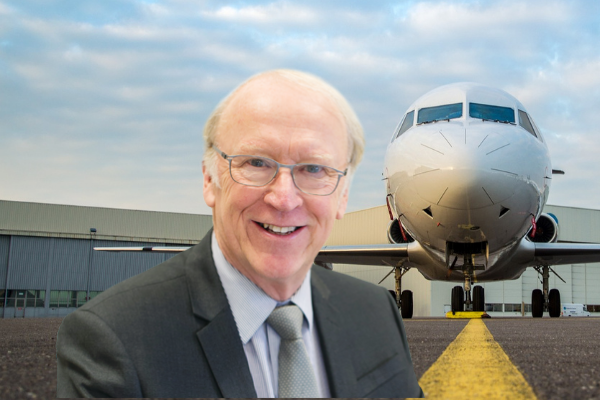How will 2020 impact the future of the aviation industry?

John Hills, Aviation Consultant at Equiom, debates the after effects of the global pandemic on the aviation industry and discusses the impact on buyer behaviour within the market.
With the added complications of Covid-19, financial market uncertainties, growing environmental concerns and, for the UK, Brexit, 2020 was an unsettling year. However, it will be most memorable for having kick-started an overdue rethink on many aspects of personal and corporate affairs. Aviation was markedly affected by each of the complications listed above. Yet the outcomes are already in sight.
The commercial airlines suffered badly in 2020. Passenger numbers fell by 70% and, on average, remain at less than 45% of 2019 levels throughout the year. It remains to be seen if, how and when airlines will return to their pre Covid-19 levels and destinations.
Private aircraft use also fell by 70% in the first two months of lockdown but then strongly recovered to 80% of YOY comparison with 2019 and is still growing. The reasons are obvious: avoidance of the multiple contact processes at large airports at both ends of a flight; the bespoke cleanliness and service levels at each end of a private flight. Very light business jets, often operated by their owner, provided near total security and protection from Covid-19. While corporate jet use fell due to caution and perhaps cost saving, the charter market showed interesting growth. The large charter and fractional aircraft operators posted remarkable levels of new entrants to their bespoke, private jet experience, notably the increased use of charter aircraft from a previously untapped sector of the population who now increasingly work and think differently. Reports show that many who have the resources to own a private aircraft currently choose not to do so, but the desire to travel securely for work and leisure makes all forms of private jet use highly attractive. It seems that a new generation of business jet users, and potentially then owners, has emerged. Will those who have experienced private flight return to commercial aircraft use in the future? It does seem most unlikely.
The use of private aviation is also very much regionally dependent. The USA is vast, well suited and organised for private point to point travel, free from scheduled routes and timetables. China, India, Russia and Africa too each suit the business jet model, with long distances covered point to point at the user’s discretion. Europe is smaller and alternative travel options are easily accessed. However, there are often operating considerations based on regional aviation regulations that must be taken into account by the operator. Equally critical are the structure of ownership and taxation of the asset: without expert management of these, expensive complications can arise. With the UK no longer providing an importation route into the EU post Brexit, alternative options need to be considered. In conjunction with opening of an office in the Netherlands Equiom has innovatively built a Netherlands temporary import mechanism which is attractive for importing business jets coming into Europe and operating under temporary import.
There is, though, no problem in getting the right aircraft for the intended use. The used aircraft markets are generally doing well. Smaller aircraft are in demand; large aircraft with ranges in excess of 6,000 miles are currently selling, but to a far smaller market. Each make, type and model has its advantages and limitations and the broker market is increasingly more adept in advising owners on the cost effective choice, selecting and subsequently marketing their aircraft.
The advantage of purchasing a new aircraft is that they are ‘future proofed’ for avionics and regulatory technical requirements, at least up to some point in the near future. Meanwhile, the electric aviation revolution is well underway, on paper, but probably still a decade away for anything required to carry more than 2 passengers over a short range. Supersonic business aircraft is nearing final test and production, though those of us who flew Concorde over 20 years ago know that their market may well be challenged by political and environmental factors. One certainty is that the numbers of business jet aircraft built, globally, has reduced annually since the credit crunch of 2008. In fact the numbers produced to sustain manufacturing now challenge just who will remain in the market. Could there be a significant change in who buys them? Perhaps the charter and fractional operators will step in once all the good used jets are no longer a practical economic option.
Throughout 2020, Equiom has continued to enhance its green credentials and business offering through the use of IT, as well as its productivity in traditional business practices. Our services to new and current aircraft owners is diverse, with in-house, multi-jurisdictional expertise via our global network of offices.
We monitor, engage in and host industry webinars and events, and are always ready to meet clients’ needs and expectations.
This article has been carefully prepared, but it has been written in general terms and should be seen as broad guidance only. The article cannot be relied upon to cover specific situations and you should not act, or refrain from acting, upon the information contained therein without obtaining specific professional advice. Please contact Equiom to discuss these matters in the context of your particular circumstance. Equiom Group, its partners, employees and agents do not accept or assume any liability or duty of care for any loss arising from any action taken or not taken by anyone in reliance on the information in this article or for any decision based on it.

Get in touch
If you have any questions, or would like to learn more about taking the next steps with Equiom, please select one of the options below.
Choose a location and contact the team Use our website form
